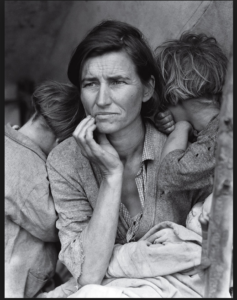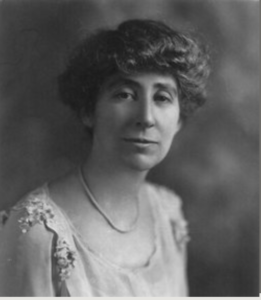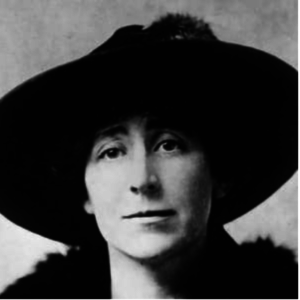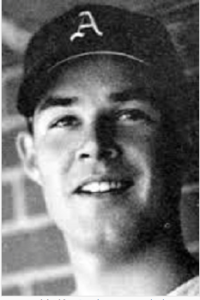Using tax lists in family history research is not for the faint of heart. No sane person abstracts them, so you can usually kiss off finding an indexed book. The only sources – other than the originals – are images of the originals. Some are unreadable due to ink bleed-through, a county clerk’s indecipherable handwriting, and/or bad photography. Many are not alphabetized.
The good news is that many have been digitized and are available online. Mining them for information requires eye drops and perseverance, but at least you can curse the clerk’s handwriting in the privacy of your own home. They are often gold mines of information.
This article uses tax lists to identify members of one of the two Rankin families living in Henderson County, Kentucky in the early 1800s. I mentioned one family in a previous article: Dr. Adam Rankin, who came to Kentucky from Franklin County, Pennsylvania. Dr. Adam was a son of William and Mary Huston Rankin of Lancaster, Cumberland, and Franklin Counties, Pennsylvania. William was a son of Adam and Mary Steele Alexander Rankin of Lancaster County.
Let’s look briefly at Dr. Adam’s family and defer the tax list search for the second family.
Dr. Adam Rankin of Franklin Co., PA and Henderson Co., KY
One doesn’t need tax lists to identify Dr. Adam’s family because an 1887 county history book did the work.[1] It names his three wives, all of his children, and many grandchildren. Dr. Adam’s family was both wealthy and prominent, a contrast to the other Henderson County Rankins. He was living there by no later than 1804,[2] probably died in January 1817,[3] and produced a large number of children. His sons were also wealthy and prominent, and his daughters “married well,” to use an archaic phrase. If Dr. Adam’s immediate family had any serious financial reversals, they aren’t obvious.
For example, Dr. Adam’s eldest son William was a county judge. In the 1860 census, he listed $18,000 in real property and $12,000 in personal property. Even the Civil War didn’t destroy him financially.[4] William’s brother Adam was elected clerk of the circuit court for many years. James Edwin Rankin, a merchant, listed $37,000 of real property and $23,000 of personalty in the 1870 census. Another son, Alexander, was a minister.
The hits just kept coming. Dr. Adam’s grandson Confederate Brigadier General Adam Rankin “Stovepipe” Johnson captured an Indiana town without firing a shot and later founded the town of Marble Falls, Texas, among other exploits. The Chairman of the Board of Churchill Downs is Dr. Adam’s descendant. In the first year of the Great Depression, a descendant of Dr. Adam owned a $300,000 mansion in Louisville.[5]
Because of their wealth, Dr. Adam’s family leaps out of the tax records. By 1808, Dr. Adam owned over 2,000 acres and fifteen enslaved persons.[6] Entries for his family fill many pages in the Henderson grantor/grantee indexes. You can undoubtedly find a lot more information with some digging if you are interested in this family’s history.
John Rankins of Henderson County, KY
The John Rankins family in Henderson also jumps out of the tax records. In their case, it is because few of them owned land. You can easily identify members of John’s family with few errors by scanning the “R” names on a tax list and noting the Rankins who had no land.
Here is a weird thing, and a digression. Their surname was most often spelled “RankinS” in both the tax lists and deed books. Dr. Adam’s family’s surname was consistently spelled “Rankin,” sans the “S.” At some point, a new clerk began transcribing the tax lists and they were all, by gosh, Rankin. Likewise, whoever typed the grantor-grantee indexes for Henderson County deeds used the name without the “S” for both families, ignoring what the deed books actually said.
If you talk to enough people about family history, someone will eventually tell you that his Clemson-Withers family is not related to your Clemsen-Withers line. The surnames are spelled differently, he will explain.
YDNA might prove him wrong, and probably will. My Rankin cousin’s closest YDNA match spells his surname Renkin. It’s a different spelling, but obviously the same genetic family. Written records are also evidence on this issue. There is a 1746 deed in Lunenburg County, Virginia in which the grantor’s name is spelled Winn, Wynn, and Wynne.[7] Which spelling was “correct,” or does it matter? Probably not, since the three spellings all referred to the same man – and the same YDNA. Eventually, a genetic relative chose to spell his name Winn. Another one chose Wynn. A different spelling, but the same genetic family.
The Henderson County Rankin-Rankins families belie the general rule that spelling doesn’t matter. When you find the surname spelled “Rankins” in Henderson County, you can be 95% certain you are not dealing with Dr. Adam’s line. By the time members of the Rankins family moved from Henderson to Crittenden County, though, the “S” had usually vanished, and they were just Rankin.
On that note, let’s finally look at the Rankins family identified by the tax lists.
In 1808, John was the first “Rankins” to be listed. No other Rankins appeared until 1834, making John the likely patriarch. In 1813 and 1814, he was taxed on 200 acres.[8] From 1828 through his death in 1841, he was not taxed on any land.
The deed books don’t reveal what happened to John’s 200 acres. If he sold it, the grantor index omitted the deed, or at least it isn’t indexed under his name. Whatever the reason for the loss, it was a bad omen for the Henderson County Rankins. (Dr. Adam, had he suffered the same loss in 1809, would have had 1,800 acres remaining). Some of John’s sons had a hard time, economically. The Rankins who acquired land, however, did just fine.
From 1834 through 1855, seven “new” men named Rankins who didn’t own land appeared in the tax lists, all possible sons of John: Marston T., James W., John B., William W., Barnett C., Abia B., and George R. Rankins.
This would be a good time to mention the 1804 Henderson County will of Marston Clay, who had sons named Marston and Barnett, among others.[9] John “Rakin,”undoubtedly John Rankins, witnessed and proved the will. Those two unusual names, Marston’s will, and other circumstantial evidence suggest that John Rankins married a daughter of Marston Clay. The circumstantial evidence is correct. According to a great-granddaughter, John Rankins came to Kentucky from Virginia and married Elizabeth Clay in 1806.[10]
Other Henderson County records create a compelling web of family connections among these Rankins. One daughter can also be identified with confidence. Here is a summary of the evidence:
- James W. Rankins was administrator of John Rankins’ estate in 1841, virtually conclusive evidence of a father-son relationship. Charles W. Clay was security on the administrator’s bond.[11]
- John B. Rankins was administrator of Marston T. Rankins’ estate. Barnett M. Clay was security on John’s $100 administrator’s bond.[12]
- John B. Rankins was guardian of Marston T.’s three minor children. Abia B. Rankins was security on the guardian’s bond.[13] Abia Benjamin (“Abe”) is proved as a son of John and Elizabeth Clay Rankins by a 1955 article written by one of his granddaughters.[14]
- James W. Rankins mortgaged crops and livestock to Barnett C. Rankins, who secured notes for James W.[15]
- James W. mortgaged a later crop to John B. Rankins, who also secured a note for James W.[16]
- James W. Rankins and his son George were living in the household of Mary (Rankin) Berry in the 1860 census.
- George R. Rankins was appointed guardian of James W.’s son, George Luther Rankins.
- In 1880, John B. Rankins was living in the household of Sarah Elizabeth Berry Read, daughter of John B.’s sister Mary Rankin Berry. John B. moved to Crittenden County and lived in the household of his nephew James L. Rankin, son of Abia B.[17]
- William W. Rankins was administrator of the estate of Barnett C. Rankins. Abia B. Rankins was a security on the administrator’s bond.[18]
And that’s all the ammo I’ve found to prove seven sons and one daughter of John and Elizabeth Clay Rankins. The 1820 census suggests two more daughters, but I haven’t identified them.
For anyone interested in this family, what follows is the rest of the information I have about them. It is precious little, with one exception: Abia Benjamin Rankin …
Abia (“Abe”) Benjamin Rankins, b. 1821-1822, d. 23 May 1898.[19]
A photograph of Abe is included in a wonderful article about him posted online by Brenda Travis Underdown, a genealogy blogger. Her article says that Sadie Rankin Terry shared a story about Abe with The Crittenden Press in November 1955. That story was the basis for Ms. Underdown’s article. Sadie, it turns out, was a daughter of William Benjamin Rankin, one of Abe’s sons.
I’m going to quote Ms. Underdown’s entire story verbatim because I cannot write it any better:
“Abia Benjamin Rankin, familiarly known as “Uncle Abe” was born in Henderson County, the son of John and Elizabeth Clay Rankin.
Abe began working on the Ohio River when a young man, loading flatboats and piloting them down the Ohio and Mississippi to New Orleans.
On one such trip he traded his boat for the tract of land between Ford’s Ferry and Weston, from which the Damn 50 Reservation site was sold. He brought his family [to Crittenden County] about 1858 and he continued to run the flatboats down the river.
He conceived the idea of planting 1,000 winter apple trees and when their fruit was harvested he planned on loading them on his flatboat and taking them to New Orleans. When the trees came into bearing they turned out to be summer apples and there was not much could be done with them, it seemed they overdid themselves in their production.
A cider mill was set-up under the trees and barrels of cider were taken south by flatboat. People came from all around and made what cider they wanted and left without ever going to the house, it turned into a community orchard.
Uncle Abe, tho never much of a farmer, had a yen for “bidding in” any tract of land that was sold at the Court house door, if it joined his tract. At his death, he owned twelve or fifteen hundred acres, extending from the river for many miles around, including Ford’s Ferry island. Mr. Rankin died May 23, 1898 and is buried at Mt. Zion Cemetery.
Abe Rankin’s first wife was Sarah Ann Smith of Illinois, the mother of Ben, Jim and Tom; after his first wife’s death (Sept. 1, 1865, Mt. Zion Cem) he married Nancy Heath of Tennessee, who was the mother of Lee Rankin and Sallie Rankin Holeman. All five of these children spent their entire lives in Crittenden County.
(2nd wife, Nancy Heath Rankin died April 20, 1910, also buried at Mt. Zion Cemetery)
(Story was shared with The Crittenden Press, Nov. 1955, by Sadie Rankin Terry.)”[20]
Another blogging genealogist, Brenda Joyce Jerome, posted a link to a Crittenden County deed proving all of Abe’s children.[21] Sidebar: there’s nothing better than finding a couple of genealogists with great blogs.
I wish half as much fun information were available for Abe’s brothers and his sister Mary. Here is much of what I found …
Marston T. Rankins (b. Henderson Co. 1810-13, d. there by May 1847).[22]
Marston and his family mostly stayed out of the records. His wife was Sarah D. Williams, daughter of William Williams.[23] Marston and Sarah had three children, all born by 1847: John W. Rankins, Barnett A. Rankins, and George H. Rankins. According to the 1870 federal census mortality schedule, Barnett A. Rankin drowned in Henderson County in July 1870 at age 25. I have no information on his two brothers.
James W. Rankins (b. Henderson Co. 1813-16, d. there 1861).[24]
James W. married Martha M. Bentley in 1845, widow of Thomas E. Bentley.[25] Martha and James were listed in the 1850 census with Mary Rankins, 8 (probably a Bentley rather than a Rankins), and George Rankins, 2, their only surviving child.
By 1860, James W. and George were living in the household of Mary W. (Rankin) Berry.[26] Things weren’t going well. James gave his occupation as “day laborer” and valued his personal property estate at $25. He died by 25 March 1861, when his brother George R. Rankins was appointed guardian of George L. (Luther).[27]
The happy economic news in James W.’s branch of the Rankins family is that his son George Luther inherited 142 acres from his Bentley half-sisters.[28] His family did just fine. George Luther moved to Crittenden County, Kentucky, where he was postmaster for many years. He and his wife Jerrie Wilson had eight children, all of whom survived him.[29]
Mary W. Rankin Berry, b. 1808, Henderson Co., d. 1874, Henderson.
Unlike her brothers, Mary Rankin Berry didn’t appear on the tax list. Instead, we identified her via the census, when her brother James W. Rankins and his son George Luther were living in her household. Mary Rankin married Lisander (or Lysander) Berry in Henderson County in September 1827. In 1830 and 1840, the Berrys were living in Hopkins and Union Counties, Kentucky, respectively. They were back in Henderson in 1850. Children in their household in 1850 were Elizabeth, age 18, Francis, 10, and Thomas Berry, 7.
Lysander and Mary Rankins Berry are both buried in the Clay Cemetery in Henderson County.
John B. Rankins (b. 1816-18, Henderson Co., d. 1897, Crittenden Co., KY).
John B.’s wife was Caroline M., maiden name unknown. They evidently had no surviving children.
Like his brothers Marston and James W., John B. did not do well financially. He bought a one-acre tract in 1861.[30] The sheriff sold it in 1862 to satisfy a judgment.[31] In 1866, he and his wife (identified as “Mrs. C. M. Rankins”) had separate listings in the tax records, one of those rare tax facts that provokes a smile: she owned a town lot valued at $400, while he owned a mule and a piano valued at $83.[32] The following year, they were listed as “J. B. Rankin and wife,” another unusual description in a tax list.[33] In 1867, they owned two acres, apparently Caroline’s town lot. It, too, was sold to satisfy a judgment.[34]
By 1880, John B. was living in the household of B. F. Read and Elizabeth (Berry) Read, a daughter of his sister Mary Rankin Berry. About 1893, John B. moved to Crittenden County, where his brother Abia and nephew George Luther lived. John B.’s 1897 obituary in The Crittenden Press says that he was living with a nephew when he died.[35] The nephew, James Leonard Rankin, was Abia’s son.
Many Crittenden County Rankins are buried in the Mt. Zion Cemetery there. The family surname is generally spelled “Rankin,” ending the only example I have ever found in which a variant surname spelling was important.
George R. Rankins, b. abt 1827 – d. after 1880.
George R. married Sarah L. Cannon in Henderson in December 1859.[36] Their children were Samuel C. Rankin (born 1860-61), John L. or D. Rankin (born 1862-63), and Furna Allen Rankin (a son, born 1819, died 1952 in McCracken County, KY).[37]
And that’s all. Whew! I have no idea what the maximum length for a blog post should be, but am confident this one exceeds it by a long shot. If you made it this far, I applaud your perseverance. You are obviously ready to tackle some tax lists.
See you on down the road.
Robin
[1] Edmund Starling, The History of Henderson County, Kentucky (Henderson, KY: 1887, reproduced by Unigraphic, Inc., Evansville, IN, 1965), 789-791.
[2] Dr. Adam Rankin first appeared on the Henderson tax list in 1804 owning about 800 acres. Henderson Co., KY 1804 tax list, “R” surnames. Online image at Familysearch.org, DGS #7834454, image #101.
[3] Dr. Adam’s inventory was taken 17 Jan 1818, so he may have died that month or in late 1817. Estate inventories were usually taken promptly. Henderson Co., KY Will Book A: 267, inventory of Dr. Adam Rankin dated 17 Jan 1818. Online image at Familysearch.org, DGS #4819887, image #267.
[4] In the 1870 federal census for Henderson, William Rankin was listed with $10,000 in real property (a decline of $8,000 since 1860) and $10,500 in personal property (a decline of $1,500).
[5] 1930 federal census, Jefferson Co., KY, Louisville, Chester A. Rankin, 47, $300,000 home.
[6] Henderson Co., KY 1808 tax list, “R” surnames. Online image at Familysearch.org, DGS #7834454, image #123.
[7] Lunenburg Co., VA Deed Book 1: 71.
[8] Henderson Co., KY Deed Book B: 145, 9 Nov 1808 deed from William B. Smith to John Rankins, 100 acres, online image at Familysearch.org, DGS #8151120, image #359; Deed Book C: 128, 9 Feb 1814 deed from William B. Smith to John Rankins, 100 acres, online image at DGS #8575132, image #68.
[9] Henderson Co., KY Will Book A: 54, will of Mastin Clay dated 19 Dec 1804, recorded June 1807, witnessed and proved by John Rakin. Online image at Familysearch.org, DGS #4819887, image #164,
[10] The Crittenden Press, Marion, KY, Friday, Nov. 12, 1955. Brenda Travis Underdown kindly provided to me a scan of the original newspaper article, which has a story written by Sadie Rankin Terry about her grandfather Abia “Abe” Benjamin Rankin, son of John and Elizabeth Clay Rankins. See Ms. Underdown’s blog here..
[11] Henderson Co., KY Court Order Book E: 40, 25 Oct 1841, James W. Rankins granted administration of the estate of John Rankins, who died intestate, $2,000 bond. Online image at Familysearch.org, DGS #8109186, image #44. Don’t know what John had worth $2,000, but it wasn’t land.
[12] Id., Order Book E: 361, 24 May 1847, John B. Rankins granted administration of the estate of Marston T. Rankins, who died intestate, bond $100, security Barnett M. Clay. Online image at Familysearch.org, DGS #8109186, image #205,
[13] Id., Order Book E: 580, 23 Dec 1850, John B. Rankins appointed guardian of John W. Rankin, Barnett A. Rankin, and George H. Rankins, infant orphans of Marston T. Rankin, dec’d. Security Abia B. Rankin, $200 bond. Online image at Familysearch.org, DGS #8109186, image #316.
[14] See Note 10.
[15] Henderson Co., KY Deed Book L: 307, mortgage dated 28 Sep 1846 from James W. Rankins to Barnett C. Rankins, 12 head of hogs and crops of corn and tobacco on premises belonging to the heirs of Thomas E. Bentley “on which I now live.” Online image at Familysearch.org, DSG #8151123, image #457. James W.’s wife was the widow of Thomas E. Bentley. His daughters owned the land where James W. lived.
[16] Henderson Co., KY Deed Book N: 267, mortgage of tobacco crop to John B. Rankins from James W. Rankins, debtor on a note to merchants in Union Town, John B. is security on the note. Online image at Familysearch.org, DGS #8575133, image #396.
[17] The information about John B. living with his nephew is from John B.’s obituary in The Crittenden Press posted here.
[18] Henderson Co., KY Court Order Book E: 474, 25 Jun 1849, Barnett C. Rankin died intestate, administration granted to William W. Rankins, bond $400, Abia B. Rankins and Thomas Hart, securities. Online image at Familysearch.org, DGS #8109186, image #263.
[19] Abia B. Rankins was enumerated in the federal census for 1850 (b. abt. 1821), 1860 (b. abt. 1822), 1870 (b. abt. 1822) and 1880 (b. abt. 1822).
[20] Brenda Travis-Underdown, “Abia ‘Abe’ Benjamin Rankin, Crittenden County Pioneer,” Forgotten Passages (blogspot.com), Oct. 20, 2016, http://ourforgottenpassages.blogspot.com/2016/10/abia-abe-benjamin-rankin-crittenden.html.
[21] Brenda Joyce Jerome, “Find the Clues in this Deed,” Western Kentucky Genealogy Blog (blogspot.com), Oct. 6, 2008, http://wkygenealogy.blogspot.com/2008/10/find-clues-in-this-deed.html, citing Crittenden Co., KY Deed Book 7: 183.
[22] The 1840 census (the only one in which Marston appeared as a head of household) says that he was born during 1810-20. His first appearance on the tax list was in 1834, suggesting he was born by at least 1813. His date of death is based on the date an administrator was appointed for his estate.
[23] Henderson Co., KY Deed Book N: 192, deed of 7 Jan 1843 from Marston T. Rankins and wife Sarah D. Rankins and William B. Williams, grantors, to George W. Cabell, tract on the waters of Highland Creek belonging to William Williams, dec’d, descended to heirs at law Sarah D. Rankins, formerly Sarah D. Williams, and Wm. B. Williams. Online image at Familysearch.org, DGS #8575133, image #358.
[24] James W. first appeared on the 1837 tax list, suggesting he was b. 1816. He was shown as age 34 in the 1850 census and age 47 in the 1860 census.
[25] Shirley C. Moody, Marriages in Henderson County, Kentucky (Evansville, IN: 1989), Marriage Book 1: 91.
[26] Mary Rankin married Lisander or Lysander Berry in Henderson Co. 6 Sep 1827. Id., Marriage Book 1: 36.
[27] Henderson Co., KY, Guardian Bonds, 25 Mar 1861 bond of George R. Rankins as guardian of Geo. L. Rankins, infant of James W. Rankins. Online image at DGS #7553297, image #26.
[28] Henderson Co., KY Deed Book X: 318, deed dated 30 Jan 1871 from James F. Sandefur and Edward O. Sandefur to George Luther Rankins. Online image at Familysearch.org, DGS #8151125, image #509. It’s a fun and complicated deed involving a mule valued at $150. It establishes that George Luther inherited 142 acres from his half sisters Martha Jane Bentley and Elizabeth Bentley, children and heirs of Thomas Bentley, dec’d. See note 15.
[29] See 1900 and 1910 federal census, Fords Ferry, Crittenden Co., KY, George L. Rankins, b. KY, parents b. KY, b. Feb. 1848, married 20 years in 1900, wife Jerry A. b. Mar 1862, daughter Gertrude, Jul 1881, son James P. (Pinkney), b. Feb. 1884 (died Apr 1944), daughter Margaret, Oct. 1886, son Ear F., Oct. 1888 (went to Iowa, then NY), son Robert, July 1892, son George L. Jr., Aug 1898, son Jerrie, abt. 1903, and son Dick, abt 1907. See also his obituary here.
[30] Id.at DGS Film #8193424, Deeds, v. S-T 1858-1864, image #421, Deed Book T: 257, deed dated 30 Apr 1861 from Virginia A. Williams and husband Henry D. Williams to John B. Rankins, one-acre tract on the waters of Highland Cr. No witnesses, suggesting a possible Williams-Rankin family connection. In fact, John B.’s grandfather Marston Clay married Elizabeth Williams in Halifax Co., VA in 1771.
[31] Id.,image #431 (Deed Book T: 277, sheriff’s deed dated 9 Aug 1862).
[32] Henderson County tax lists starting sometime in the 1850s had more than 40 columns of information for each listed taxpayer. They were a real pain to search.
[33] Both the 1866 and 1867 listings are at odds with the legal status of women at that time.
[34] Henderson Co., KY Deed Book W: 348, lot in Smith Mills sold by a Commissioner in the case of William M Cooper vs. J. B. Rankin. Judgment to satisfy debt to plaintiff. Online image, Familysearch.org, DGS #8151125, image #227.
[35] You can find John B. Rankin’s obituary from The Crittenden Press here.
[36] Familysearch.org catalog, Henderson Co., KY, Vital Records, Marriage Records, 1806-1952, DGS #7721293, image #180 (Marriage Bond: 311, bond of George R. Rankins and Miss Sarah L. Cannon dated 22 Dec 1859); DGS 4261112, image #142 (marriage return, G. R. Rankins and Sarah L. Cannon, 26 Dec 1859).
[37] Here is an image of his tombstone in Paducah, McCracken Co., KY. See also the 1870 and 1880 Henderson Co. census, which appear to have his birth year as 1865.










